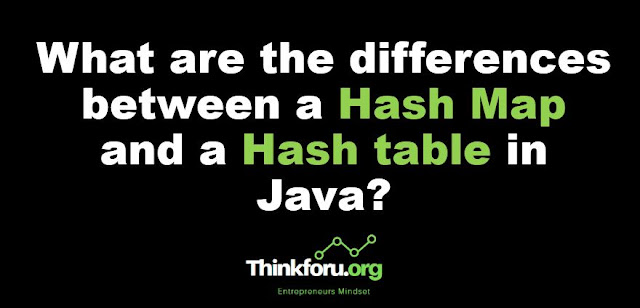What are the Differences between a [ Hash Map and a Hash table ] in Java?
What are the differences between a Hash Map and a Hash table in Java?
 |
| Cover Image of What are the differences between a Hash Map and a Hash table in Java? |
In Java, a Hash Map and a Hash table are both data structures that use hash functions to map keys to their corresponding values. However, there are some differences between the two:
Synchronization: A Hash table is synchronized, which means that it can be used safely by multiple threads simultaneously. In contrast, a Hash Map is not synchronized by default, although it can be made thread-safe by using the "synchronized map" method.
Null keys and values: Hash tables do not allow null keys or values, whereas Hash Maps allow both null keys and values.
Iteration: When iterating over the entries in a Hash table, the order in which the entries are returned is not guaranteed. In contrast, a Hash Map provides no guarantee of the order in which the entries are returned, but it does offer the ability to iterate over its keys, values, or entries in a specified order.
Performance: In general, Hash Maps are considered to have better performance than Hash tables. This is because Hash Maps are not synchronized by default, which reduces the overhead of synchronization. Additionally, Hash Maps use an "Iterator" to iterate over their entries, which is generally faster than the Enumeration used by Hash tables.
Overall, the choice between a Hash Map and a Hash table in Java will depend on the specific requirements of your application. If thread safety is a concern and null keys/values are not required, then a Hash table may be the better choice. Otherwise, a Hash Map may be a better option due to its better performance and greater flexibility.